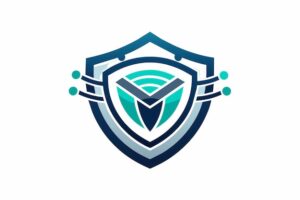
As the digital landscape evolves, so does the importance of cybersecurity in a digital age. Our reliance on technology grows daily, making cybersecurity not just a priority but a necessity. From individuals to large corporations, everyone needs to understand and implement effective cybersecurity measures to protect against ever-evolving threats. This article delves into the critical aspects of cybersecurity in a digital age, offering insights into why it matters and how you can safeguard your digital life.
Understanding the Cyber Threat Landscape
Firstly, it’s crucial to understand the cyber threat landscape. Cybercriminals continually develop sophisticated techniques to exploit vulnerabilities. Whether it’s phishing attacks, ransomware, or data breaches, these threats can cause significant harm. For instance, a ransomware attack can lock you out of your data, demanding payment for its release. On the other hand, data breaches can expose sensitive information, leading to financial loss and identity theft.
Moreover, the rise of the Internet of Things (IoT) adds another layer of complexity. Each connected device, from smart home systems to wearable technology, represents a potential entry point for cybercriminals. Consequently, staying informed about these threats is the first step in defending against them.
The Role of Cybersecurity in Digital Age
Next, let’s explore the role of cybersecurity in a digital age. Cybersecurity encompasses a range of practices designed to protect networks, devices, programs, and data from attack, damage, or unauthorized access. Effective cybersecurity measures include firewalls, antivirus software, encryption, and multi-factor authentication (MFA).
Implementing these measures creates a robust defense against cyber threats. For instance, firewalls act as a barrier between your network and potential attackers, while encryption ensures that even if data is intercepted, it remains unreadable. Multi-factor authentication adds an extra layer of security by requiring multiple forms of verification before granting access.
The Human Element in Cybersecurity
However, technology alone cannot guarantee security. The human element plays a significant role in cybersecurity in a digital age. Often, cybercriminals exploit human errors, such as weak passwords or falling for phishing scams. Therefore, educating yourself and your employees about cybersecurity best practices is vital.
For example, always use strong, unique passwords for different accounts and change them regularly. Be cautious when clicking on links or downloading attachments from unknown sources. Additionally, consider ongoing cybersecurity training for employees to keep them aware of the latest threats and how to avoid them.
The Impact of Cybersecurity on Businesses
Furthermore, the impact of cybersecurity in a digital age extends beyond individual users to businesses. A successful cyber attack can cripple a business, resulting in financial loss, reputational damage, and legal repercussions. Consequently, businesses must invest in comprehensive cybersecurity strategies.
A strong cybersecurity framework includes regular security assessments, incident response plans, and employee training programs. By proactively identifying and addressing vulnerabilities, businesses can mitigate the risk of cyber attacks. Moreover, having an incident response plan ensures that if an attack occurs, the organization can respond swiftly to minimize damage.
Emerging Trends in Cybersecurity
As we move forward, emerging trends in cybersecurity in a digital age continue to shape the landscape. One significant trend is the increasing use of artificial intelligence (AI) and machine learning in cybersecurity. These technologies can analyze vast amounts of data to detect anomalies and potential threats more effectively than traditional methods.
Another trend is the shift towards zero-trust architecture. Unlike traditional security models that assume everything inside the network is safe, zero-trust requires verification for every access request, regardless of its origin. This approach reduces the risk of insider threats and lateral movement within the network.
Personal Cybersecurity Measures
Finally, let’s discuss personal cybersecurity measures. Protecting yourself in a digital age requires a proactive approach. Start by securing your devices with strong passwords and keeping your software up to date. Enable firewalls and install reputable antivirus programs.
Additionally, be mindful of the information you share online. Limit the amount of personal information on social media and use privacy settings to control who can see your posts. Be cautious of public Wi-Fi networks, which can be a hotspot for cybercriminals. Use a virtual private network (VPN) to encrypt your internet connection when using public Wi-Fi.
Conclusion
In conclusion, cybersecurity in a digital age is not just a technical challenge but a fundamental aspect of our digital lives. As technology advances, so do the tactics of cybercriminals. By understanding the threats, implementing robust cybersecurity measures, and staying informed about emerging trends, we can protect our data, our businesses, and our futures. Prioritizing cybersecurity ensures a safer digital world for everyone. Stay vigilant, stay informed, and stay secure.
